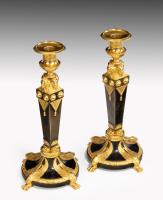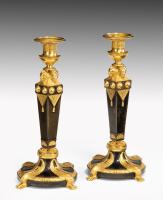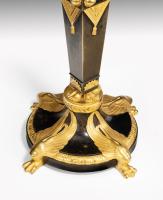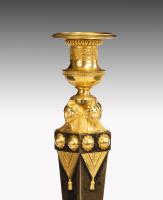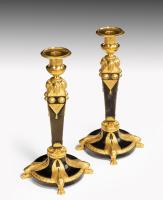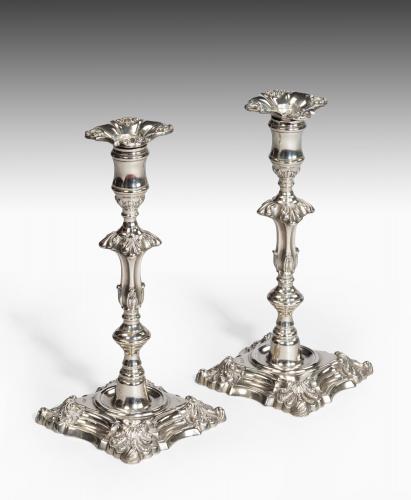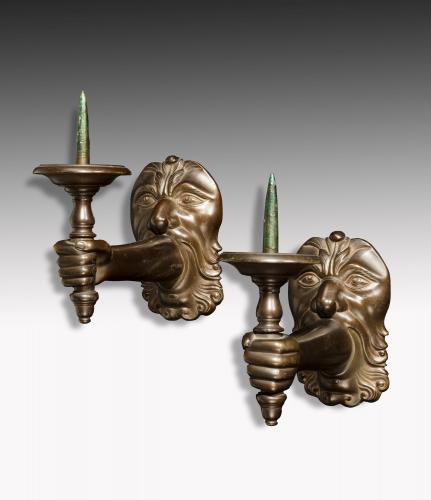
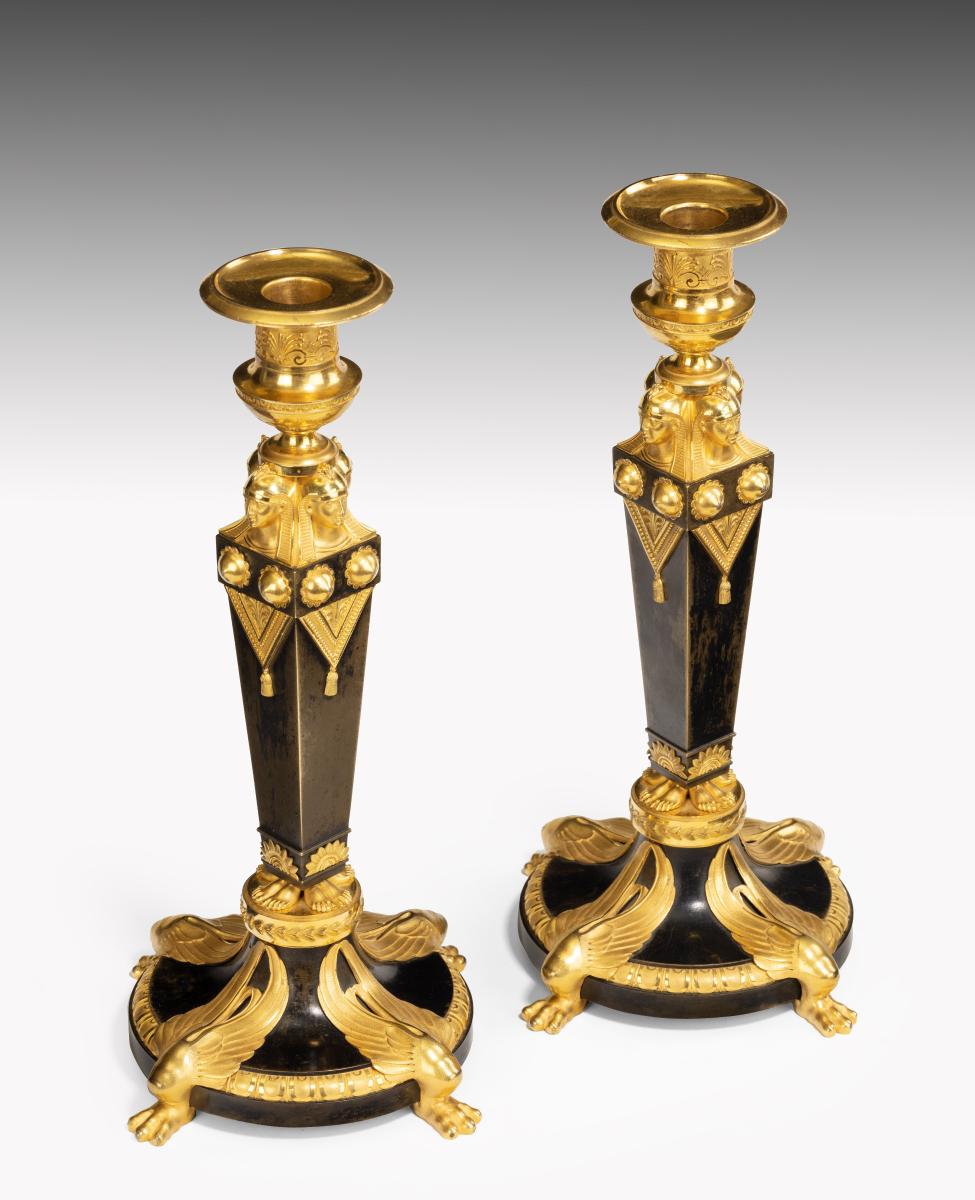
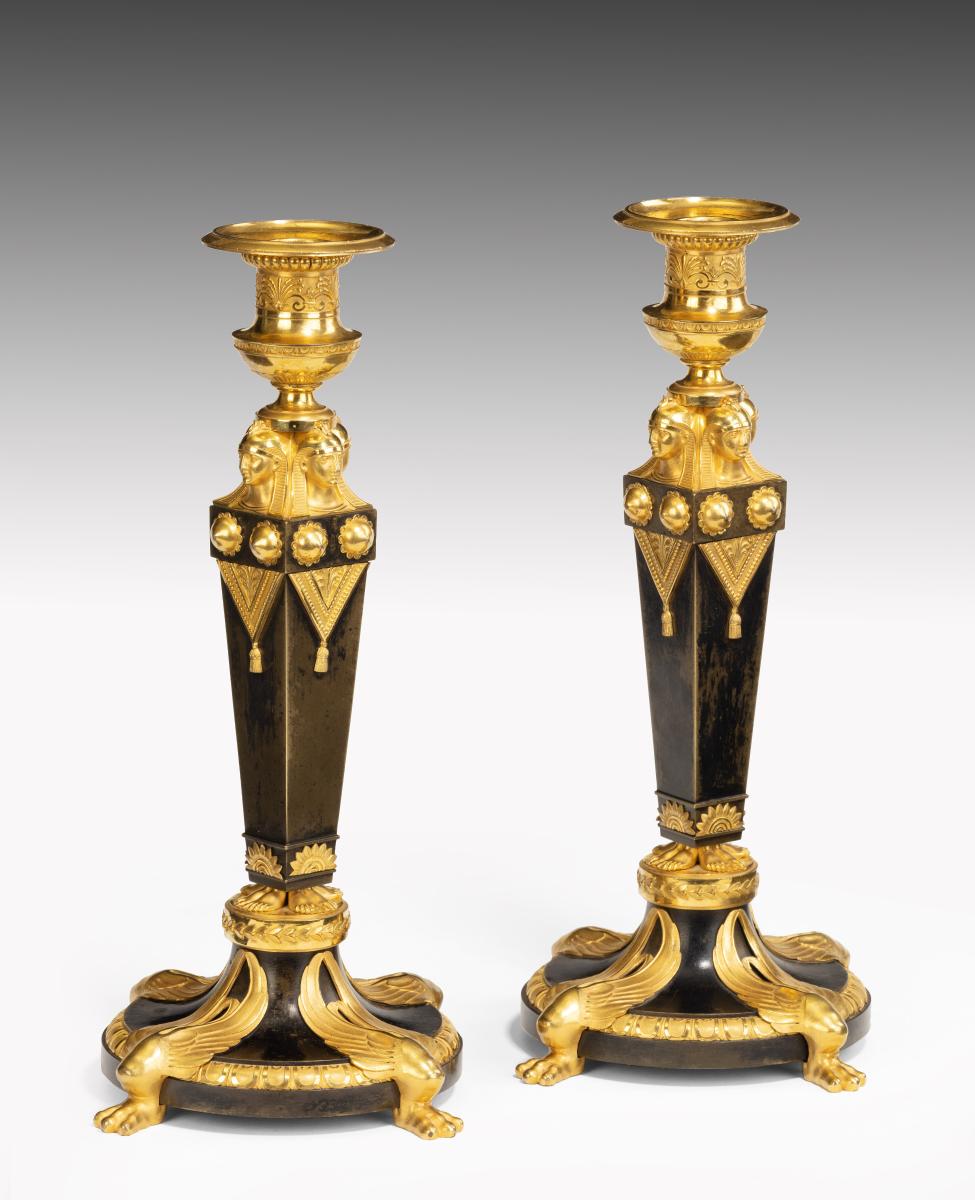
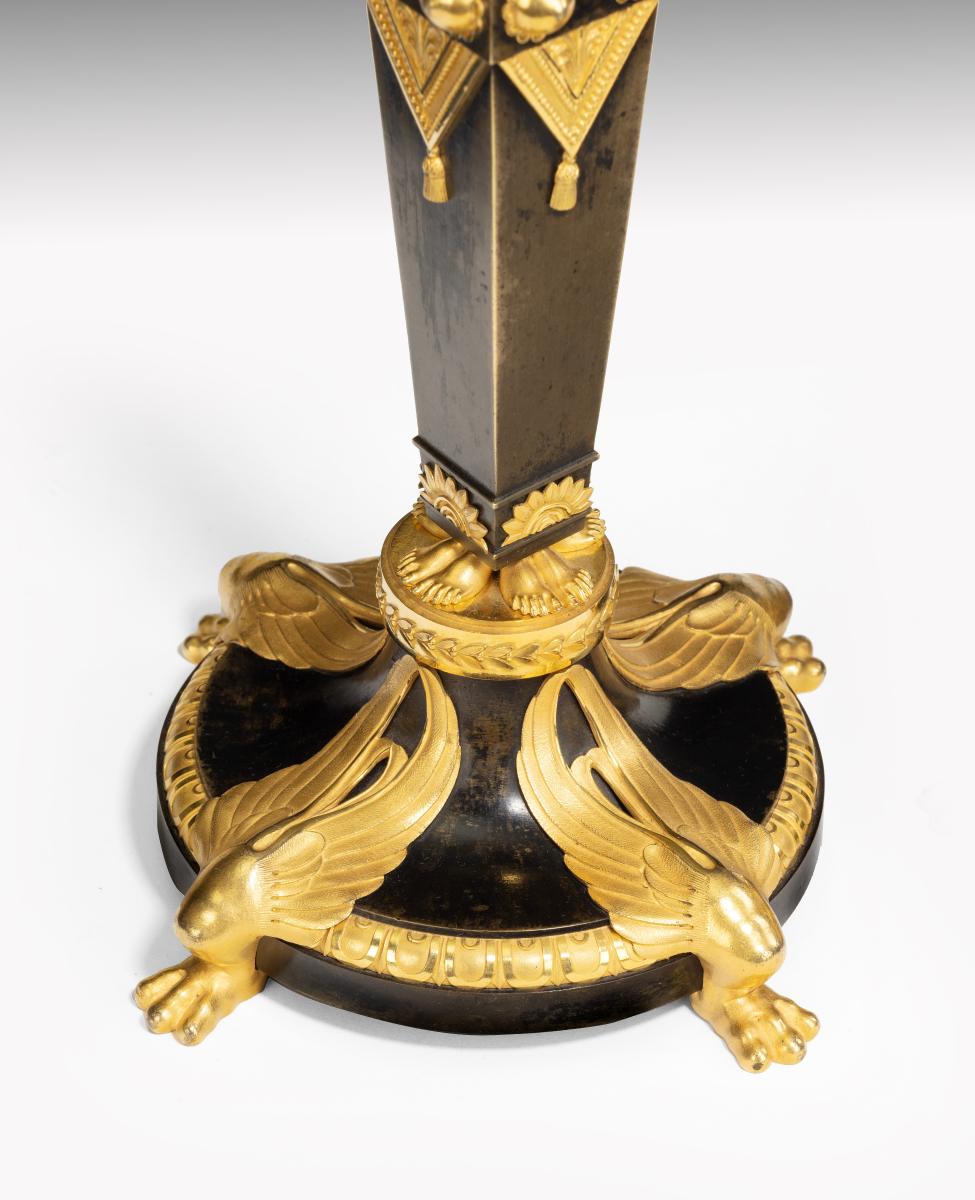
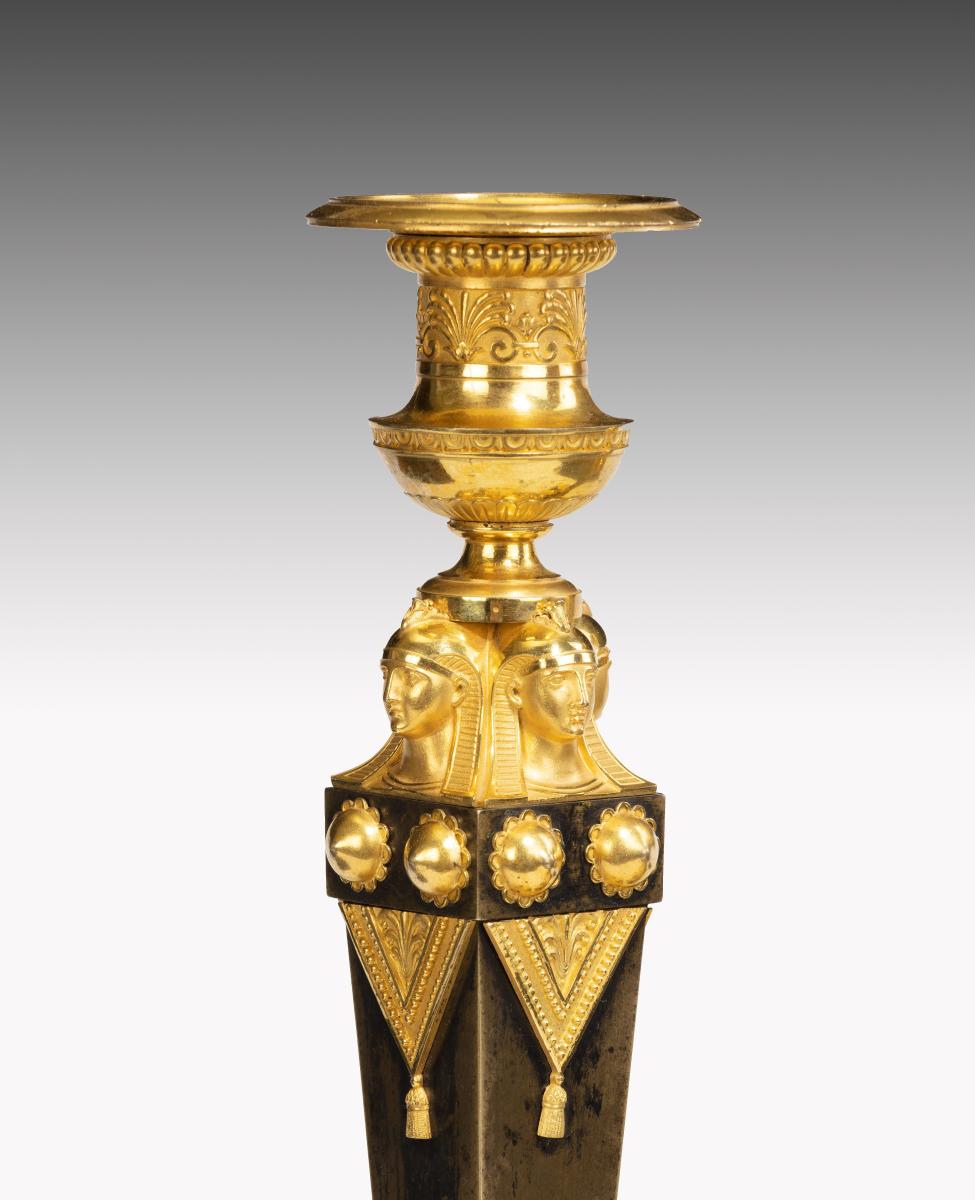
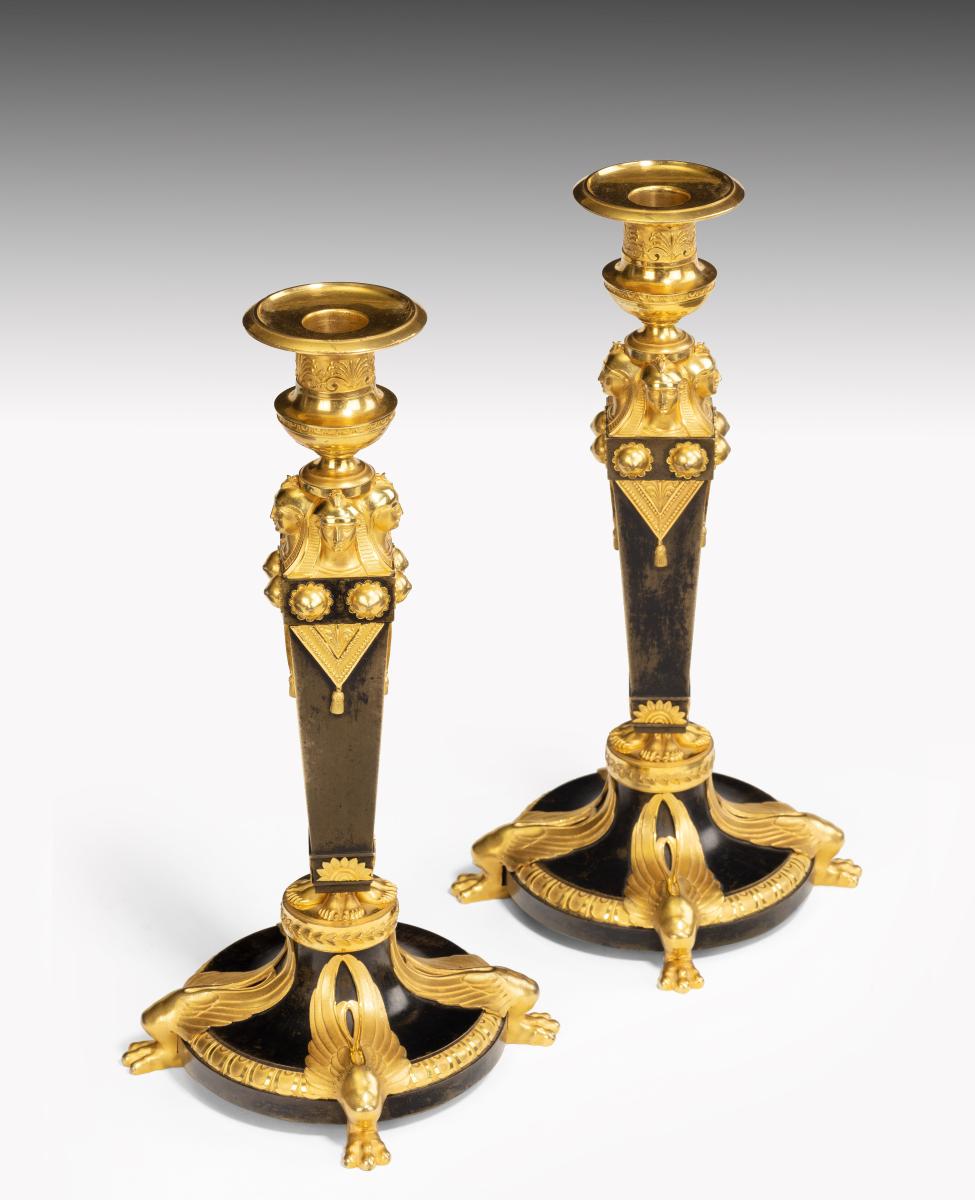
This object includes complimentary, Insured Shipping / Delivery within the UK
This object is eligible for a Certificate of BADA Provenance
The BADA Standard
- Since 1918, BADA has been the leading association for the antiques and fine art trade
- Members are elected for their knowledge, integrity and quality of stock
- Our clients are protected by BADA’s code of conduct
- Our dealers’ membership is reviewed and renewed annually
- Bada.org is a non-profit site: clients deal directly with members and they pay no hidden fees
Pair of French Neo-Egyptian Bronze and Ormolu Candlesticks.
Attributed to the Workshop of Henri Auguste (1759-1816)
After an original design by Jean-Guillaume Moitte (1746-1810)
FRANCE, circa 1800
Provenance:
Sold Sotheby's Zurich, 1999.
Collection of Count Waleska (descendant of Marie Walewska, mistress of Napoleon).
Sold Christie’s Geneva.
With Jeremy Ltd., London.
Private European Collection.
A pair of French neo-Egyptian gun metal and ormolu candlesticks. The four Egyptian heads supporting a classically decorated Egyptian palm leaf nozzle. The stem decorated with palms and a rising sun motif. With a circular base with winged lion’s paw feet under an egg and dart moulding. The whole executed in gilded and polished metal.
These candlesticks were made by the workshop of Henri Auguste, who worked in partnership with Jean-Guillaume Moitte, regularly using Moitte’s designs. The design for the candlesticks is in the collection of the Metropolitan Museum of Art, New York (Accession Number: 1978.521.2). The design for this candlestick is the left hand candlestick in this drawing of ‘Three Designs for Candlesticks’ by the Workshop of Henri Auguste, c. 1770–1816.
Henri Auguste (1759–1816): was the son of the royal goldsmith Robert-Joseph Auguste (1723–1805). He took over his father’s workshops in 1784–85. He continued to receive official patronage from Louis XVI and later from Napoleon. When Napoleon became Emperor, Auguste received his most important commission from the City of Paris for a silver service comprising 425 pieces. Henri Auguste supplied clients across Europe including George III, Catherine the Great and William Beckford. However, in 1806, as Auguste was completing a gilt toilet service for Empress Josephine, he declared bankruptcy.
Stephanie de Beauharnais was the cousin of Napoleon’s first wife Josephine, and was adopted by Bonaparte in 1796. On her marriage to Karl, Grand Duke of Baden on 7th April 1806, the Emperor presented her with a toilet service and other works of silver gilt, each decorated with the initials SN for Stephanie Napoleon. These passed by descent to her daughter Princess Marie Amelie, Duchess of Hamilton.
This pair of candlesticks are very similar in feeling to the toilet mirror which belonged to Napoleon’s wife, the Empress Joséphine. Moitte was highly favoured by Napoleon and many examples of his neo-Egyptian sculpture are housed in the Louvre’s collection.
Jean-Guillaume Moitte (11 November 1746 – 2 May 1810): was a French sculptor. Born in Paris, he won the Prix de Rome for sculpture in 1768 with ‘David carrying the head of Goliath in triumph’. He then entered the École royale des élèves protégés before a stay in Rome, which was cut short due to illness. He worked for the Goldsmith of the King, Henri Auguste (1759-1816), for whom he delivered many models and drawings from the antique. Moitte was employed in numerous decorative works of public buildings and monuments such as the courtyard of the Louvre; the Place du Peyrou in Montpellier; and the pediment of the Panthéon de Paris during the French Revolution, with the theme of the Fatherland crowning the civil and heroic virtues. He was a member of the Institut de France, Chevalier of the Légion d’Honneur and professor of the École des Beaux-Arts de Paris.
Dimensions
31.1 x 12.1 cmThis object includes complimentary, Insured Shipping / Delivery within the UK
This object is eligible for a Certificate of BADA Provenance
Stock number
548aThe BADA Standard
- Since 1918, BADA has been the leading association for the antiques and fine art trade
- Members are elected for their knowledge, integrity and quality of stock
- Our clients are protected by BADA’s code of conduct
- Our dealers’ membership is reviewed and renewed annually
- Bada.org is a non-profit site: clients deal directly with members and they pay no hidden fees


